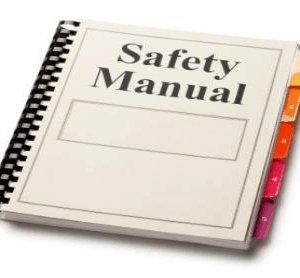Need some free safety meeting topics?
Lockout Tag Out for Mobile Equipment in Construction
Online workplace safety training now available!
Browse our collection of high-quality online worker safety training courses. Convenient, cost-effective, and effective online safety training!

Lockout Tag Out for Mobile Equipment Free Tailgate Safety Meeting Topic
When working around heavy machinery, protecting yourself and your team is critical. One of the most effective ways to prevent serious injury or death is by following Lockout Tag Out for Mobile Equipment procedures. This process controls hazardous energy and ensures that mobile equipment cannot be started accidentally during maintenance or repairs.
Let’s take a few minutes to review why Lockout Tag Out (LOTO) is important, the energy sources involved, and the basic steps you must follow.
Why Lockout Tag Out for Mobile Equipment is Critical
Mobile equipment like excavators, milling machines, loaders, forklifts, and cranes are powerful machines. If they move unexpectedly during service, the results can be catastrophic — crushing injuries, amputations, or fatalities.
Lockout Tag Out for mobile equipment (LOTO) protects workers by isolating energy sources and preventing accidental start-ups. It’s not just a best practice; it’s required by OSHA and many site-specific safety programs. Failing to properly lock out equipment can result in severe penalties and, more importantly, irreversible injuries and death.
Understanding the Energy Sources in Mobile Equipment
LOTO is all about controlling hazardous energy. The goal is to place the machine into a “zero energy state” by physically separating the machine from its energy sources. When locking out mobile equipment, it’s important to recognize that there may be more than one source of hazardous energy. Some common examples include:
Mechanical Energy
Mechanical energy comes from objects or machine parts that are in motion. Every part of the machine that can move must be separated from its energy source and secured in place to prevent unexpected movement.
Hydraulic and Pneumatic Energy
Pressurized fluid systems can cause equipment parts to move without warning. These systems must be depressurized before work begins. Even if the machine has been turned off, any pressure in these systems can cause unexpected movement.
Electrical Energy
Batteries and onboard electrical systems can energize circuits and cause shocks or unintentional movement. Many machines are made with battery disconnect switches that can be locked out. Always consult the manufacturer’s instructions for the correct way to disconnect the machine’s electrical system.
Gravity and Potential Energy
Raised machine parts can potentially fall or move due to gravity. Compressed springs and similar parts store “potential energy,” which can also cause sudden movement. This type of energy can be dealt with by lowering raised parts, installing blocks, and releasing compressed springs or parts that are under a load.
While this is not an exhaustive list, each energy source must be identified and controlled during the lockout process. Always read the manufacturer’s instructions to learn what energy sources your machine has.
Basic Steps for Lockout Tag Out for Mobile Equipment
Performing Lockout Tag Out correctly isn’t complicated, but it must be done thoroughly every time. Your employer should develop specific LOTO procedures for the mobile equipment you operate. Here are the basic steps for Lockout Tag Out for Mobile Equipment:
1. Prepare for Shutdown
Understand the type and magnitude of the energy involved. Every energy source must be identifed. Gather all tools and devices needed, such as locks, tags, and blocking equipment.
2. Notify Affected Employees
Inform anyone working around the equipment that a lockout will take place. These workers must understand that removing LOTO equipment and attempting to use machines that are under LOTO is dangerous and strictly prohibited.
3. Shut Down the Equipment
Turn off the machine following the machine’s normal shut-down procedures.
4. Isolate the Energy Sources
Disconnect batteries, bleed hydraulic and pneumatic lines, lower suspended parts, and block any components that could move. Once again, review your company’s lockout policies and the manufacturer’s instructions before attempting LOTO.
5. Apply Lockout and Tagout Devices
Place locks and tags on each energy-isolating device to prevent re-energization. Use your personal lock so only you can remove it. Each worker involved in the task must apply his own locks and tags to ensure that everybody is kept safe.
6. Verify Zero Energy State
Before starting work, try to activate the machine controls to ensure that all energy sources are properly isolated. Ensure all workers are in a safe location and inform them that you are about to test the lockout before beginning this step.
7. Perform Maintenance or Repairs
Only begin work after confirming the equipment is fully locked out.
8. Remove Lockout Devices When Work is Complete
Once maintenance is finished and all guards and safety devices are reinstalled, remove locks and tags according to company procedures, restore energy sources, and notify everyone that the equipment is ready to operate.
Lockout Tag Out for Mobile Equipment – Final Reminders
Lockout Tag Out for Mobile Equipment is about keeping everyone safe. Shortcuts, assumptions, or rushed jobs can cost lives. Always take the time to properly lock out, tag out, and verify that energy is controlled.
Remember: if you didn’t lock it out, don’t work on it!
Purchase our informative Lockout Tag Out Safety Poster here.
-
 2025 Labor Law Poster State and Federal Combo$33.99
2025 Labor Law Poster State and Federal Combo$33.99 -
Product on sale
 Heat Illness Prevention PlanOriginal price was: $39.99.$29.99Current price is: $29.99.
Heat Illness Prevention PlanOriginal price was: $39.99.$29.99Current price is: $29.99. -
Product on sale
 Injury/Illness Prevention Program (IIPP)Original price was: $49.99.$39.99Current price is: $39.99.
Injury/Illness Prevention Program (IIPP)Original price was: $49.99.$39.99Current price is: $39.99.
